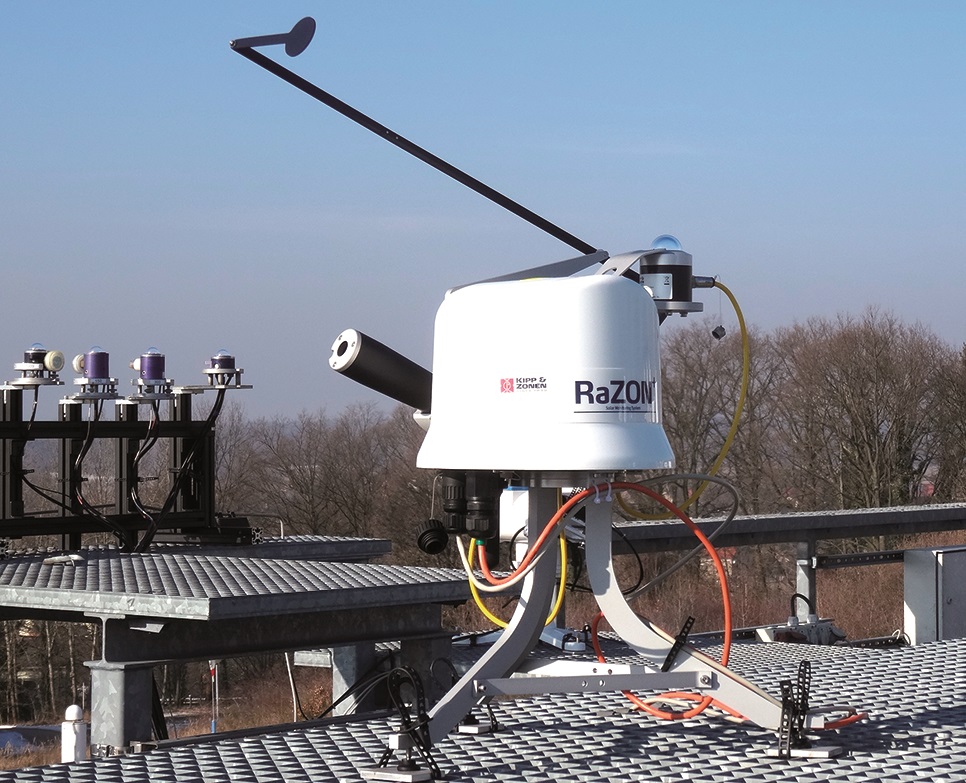Reliable high-quality measurements and observations are essential for weather forecasting, and for the climate and environmental services of the Deutsche Wetterdienst (DWD). DWD performs research in these areas to continuously improve its operational measurement systems and networks according to the state-of-the-art in science and technology. Therefore it came as no surprise that DWD was one of the first customers to purchase our new RaZON+ all-in-one solar monitoring system.
Klaus Behrens oversees the Radiation Processes Group at the main DWD research site, Meteorologisches Observatorium Lindenberg - Richard Aßmann-Observatorium (MOL-RAO), which has been at the leading edge of meteorological research since 1905. Lindenberg is one of the earliest Baseline Surface Radiation Network (BSRN) sites and is also a member of the European Skynet Radiometers Network (ESR) with the POM-02 and hosts at least one of the DWD Brewer spectrophotometers.
Lindenberg carries out inter-comparisons of many types of instruments, including UV radiometers and scintillometers. The observatory is equipped with many scientific instruments to study and characterize physical processes in the atmosphere, and one of the most important measurements at the observatory is the measurement of solar, atmospheric and terrestrial radiation. The energy balance between the Earth, the sun and space is monitored by Kipp & Zonen instruments at the BSRN station.
Associated with Lindenberg is the Meteorological Observatory Hohenpeissenberg, which is the world’s oldest mountain observatory, dating back to 1781. Situated 80 km southwest of Munich in the foothills of the Alps, the Observatory is a major Global Station of the Global Atmospheric Watch programme and also has Brewer instruments to monitor the health of the atmosphere.
Now, the Lindenberg Observatory is evaluating our latest innovation - RaZON+. Mr. Behrens says; “It is a completely new and interesting approach to solar radiation measurement, with new instruments. It uses a concept of data acquisition and distribution that is still not so commonly used in the field of radiation measurements.
When the RaZON+ was delivered in December the winter was not yet in full effect, which allowed us to mount the system to the platform immediately and start making measurements. I’m happy that we were able to gather experiences about the system during winter with harsh conditions and low sun, up to the summer period. This helps us to test this new measurement approach, and its features, and to compare it with the more traditional equipment; such as our BSRN station with both 2AP and SOLYS2 sun trackers.
The installation of the RaZON+ was that easy that we did not even use the manual! We just fixed it to the platform, switched it on and it was ready to go. We did have some difficulties setting the RaZON+ up in our network infrastructure but quickly found a workaround to read the data from the network. The fact that it has an integrated data logger inside was very convenient.
It is too preliminary to make any judgements yet about the measurement data because we are still emerging from winter-time, however we can say that the global radiation information given by the RaZON+ is in good agreement with the data received from the CM22 we use in our BSRN routine. We look forward to evaluating the RaZON+ performance when the sun shows more of itself.”
More information about the observatory can be found (in German) at www.dwd.de/mol.
We thank Mr. Behrens for his review and look forward to learning more about the DWD RaZON+ measurements in the summer.
